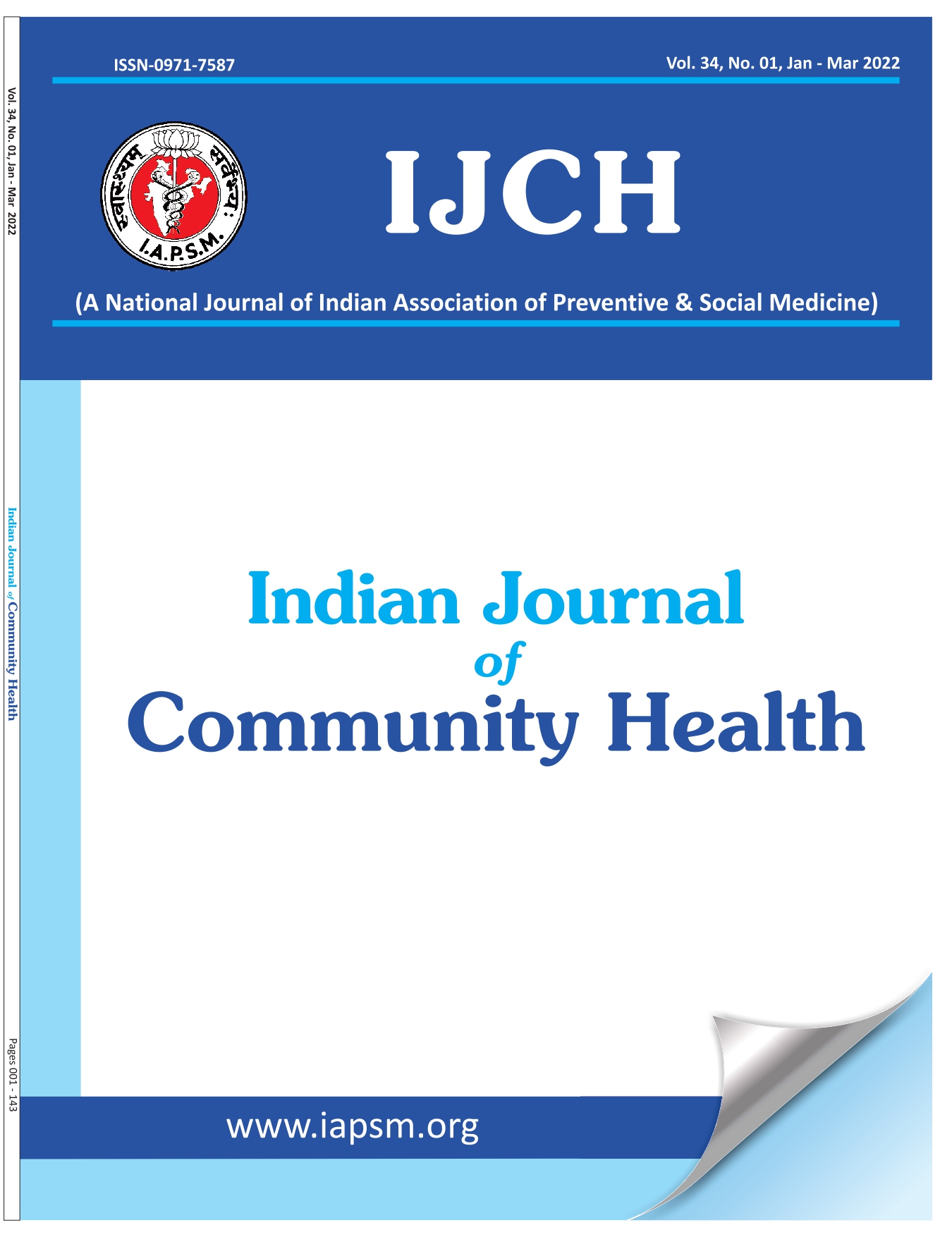Predictors of third and Higher order births in India
Abstract
Background: Total fertility rate (TFR) reflecting population growth is closely related to higher order parity progression. Many Indian states reached replacement level of TFR, but still states constituting nearly 40% population are with TFR ? 3. The predictors are the desire of son’s, poor contraceptives practices, younger age at marriage, child loss and shorter birth spacing. Objective: This analysis assessed the degree of relation of 3rd and higher order parity progression with the above mentioned predictors. Material and Methods: State/Union Territories wise proportions of women: progressing to ?3 births, more sons desire, birth spacing <24 months, adopting modern contraception and median marriage age <18 years along with infant mortality rate (IMR) were taken from NFHS-III report. Correlation matrix and stepwise forward multiple regression carried. Significance was seen at 5%. Results: Hindi speaking states constituting 38.92% nation population recorded TFR ?3. Positive correlation of mothers progressing ? 3 births was highest (0.746) with those desiring more sons followed by IMR (0.445); while maximum negative correlation with those practicing modern contraceptives (-0.565) followed by median age at marriage (-0.391). Multiple regression analysis in order identified desire of more sons, practicing modern contraception and shorter birth spacing as the significant predictors and jointly explained 77.9% of the total variation with gain of 15.5% by adding modern contraceptive practice and 8.3% by adding shorter birth spacing. Conclusions: Desire of more sons appeared the most important predictor to progress ?3 births that is governed by society culture and educational attainment, require attitudinal change. Further, mothers need motivation to practice both spacing and terminal methods once family is complete.





